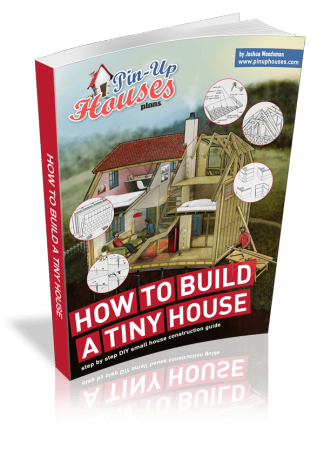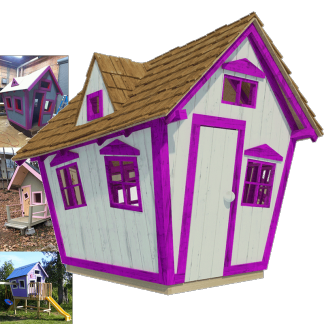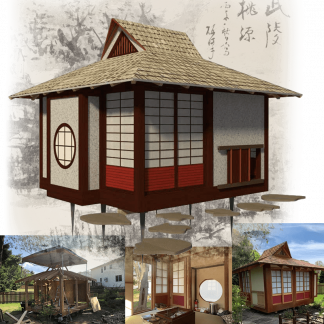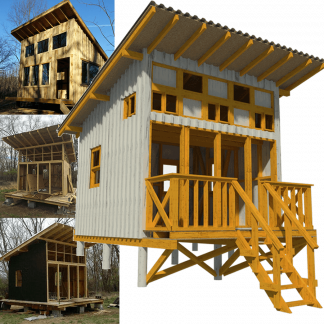Tiny homes embody the charm of minimalist living, but designing a functional kitchen in such a compact space can be a significant challenge. Every detail, from the layout to the choice of materials, plays a crucial role in creating a space that feels both efficient and inviting. Kitchens in tiny homes demand creativity, with smart solutions to maximize storage, optimize workflow, and enhance the feeling of openness despite the limited square footage.
With the right approach, even the smallest kitchen can become a centerpiece of style and practicality, seamlessly fitting into the tiny home lifestyle.
Clever Layout Strategies
The layout of a tiny home kitchen is the foundation of its functionality and efficiency. With limited space, every design decision must focus on maximizing usability while maintaining an open, uncluttered feel.
Here are some practical layout options to consider:
- Galley Kitchen: Features counters and cabinets along two parallel walls, making use of vertical and horizontal space while keeping essentials within reach. For example, a galley kitchen could feature sleek white cabinets along both walls, with under-cabinet lighting to brighten the workspace and reflective backsplashes to enhance the sense of depth.
- Single-Wall Kitchen: Aligns all appliances and storage on one side, freeing up the rest of the room for movement. This layout might include compact appliances and open shelving above the counter to keep the space feeling light and open.
- U-shaped Kitchen: Offers additional counter and storage space but works best in slightly larger tiny homes to avoid feeling cramped. Picture a U-shaped layout with natural wood counters, ample storage beneath, and a small central workspace for meal prep.
Case Study Example:
Take the transformation of a galley kitchen in a 250-square-foot tiny home. Originally, the kitchen felt cramped due to mismatched cabinets and an inefficient layout. By incorporating a galley design with custom pull-out drawers, the space became highly functional and visually cohesive. One wall featured vertical shelving for pantry items and hanging racks for utensils, while the opposite side housed compact appliances and a fold-down countertop for extra workspace. The addition of a light backsplash brightened the area, creating an illusion of more space without increasing square footage.
To optimize efficiency, use the “kitchen triangle” concept—placing the sink, stove, and refrigerator in close proximity to streamline movement and improve workflow.
Working with professionals who specialize in small space designs can help you achieve a layout tailored to your needs. High-quality kitchen remodel services ensure that every inch of your tiny kitchen is thoughtfully utilized, blending practicality with style.
Space-Saving Storage Solutions
Storage is often one of the biggest challenges in a tiny home kitchen, but with the right approach, even the smallest spaces can hold more than you might expect.
Maximize your storage potential with these ideas:
- Pull-out pantry drawers: Great for vertical storage of spices, canned goods, or cleaning supplies.
- Hanging racks: Ideal for pots, pans, and utensils to free up cabinet space and keep essentials accessible.
- Pegboards: Popular in small urban kitchens, these keep tools organized and within easy reach.
- Magnetic strips: Perfect for storing knives or spice jars on walls, eliminating the need for bulky organizers.
Resources like Houzz’s guide to small kitchen storage offer additional ideas to help you make every inch count.
By thinking creatively and utilizing every inch of available space, you can design a kitchen that’s both beautiful and highly functional, even with limited square footage.
Choosing Compact and Multi-Purpose Appliances
Appliances are crucial in any kitchen, but in tiny homes, they must do more with less. Compact, multi-purpose appliances are ideal for saving space while maintaining the functionality of a full-sized kitchen.
Consider these efficient appliance options:
- Breville Compact Smart Oven: Combines toasting, baking, and broiling in one small appliance.
- Smeg Mini-Fridges: Retro-style refrigerators that add a pop of color while saving space.
- LG All-in-One Washer-Dryer: Perfect for tiny home living with its compact, multi-functional design.
- Portable induction cooktops: Lightweight and easy to store, offering flexible cooking solutions.
Incorporating these options alongside easy kitchen renovation hacks can help you create a seamless and practical kitchen design tailored to your tiny home.
Lighting and Color: Making the Space Feel Larger
The right lighting and color scheme can make a world of difference in a tiny kitchen, helping it feel more open and inviting despite its limited size.
To make the space feel larger:
- Use light, neutral colors: Whites, beiges, or soft pastels create an airy atmosphere.
- Choose reflective surfaces: Glossy cabinets, light-colored countertops, or mirrored backsplashes amplify light and create the illusion of space.
- Add pops of color: Use vibrant dishware or a patterned backsplash to add personality without overwhelming the room.
Layered lighting solutions can enhance functionality and ambiance:
- Overhead lighting: Recessed lights or small pendants provide general illumination.
- Under-cabinet lighting: Highlights countertops and makes food preparation tasks easier.
- Maximize natural light: Keep windows unobstructed, or consider installing skylights for a brighter and more open feel.
By thoughtfully combining light and color, you can transform a tiny kitchen into a bright, welcoming space that feels anything but cramped.
Professional Remodeling Benefits
When it comes to designing a tiny home kitchen, DIY projects can be rewarding—but they aren’t always the easiest option. That’s where professional remodelers come in. With their expertise, they can transform your kitchen into a functional and stylish space that works perfectly within your limited square footage.
Why are professional remodelers worth considering?
- Custom solutions: Professionals can create tailor-made cabinetry, furniture, and storage options that fit your unique kitchen layout and needs.
- High-quality materials: They know which durable and stylish materials will stand the test of time while keeping your kitchen looking great.
- Technical expertise: From proper ventilation to managing electrical and plumbing challenges, they’ve seen it all and know how to ensure everything works seamlessly.
Hiring a professional isn’t just about saving time and effort—it’s also about getting a polished, high-quality result that you’ll enjoy for years to come. Plus, they can help you avoid costly mistakes by spotting potential issues before they become problems.
Ultimately, working with a professional remodeler is a smart investment if you’re looking for a kitchen that balances practicality and beauty.
Conclusion
Designing a functional and stylish kitchen in a tiny home requires creativity, smart planning, and attention to detail. From choosing an efficient layout and compact appliances to incorporating clever storage solutions, each decision contributes to maximizing space without compromising on style.
By utilizing design principles like layering light, selecting the right color schemes, and exploring professional remodeling options, even the smallest kitchens can become efficient, welcoming hubs that complement the tiny home lifestyle.
What strategies will you use to maximize your tiny home kitchen? Whether you implement clever storage ideas, invest in compact appliances, or explore professional remodeling options, start planning today to create a kitchen that’s both practical and beautiful.








